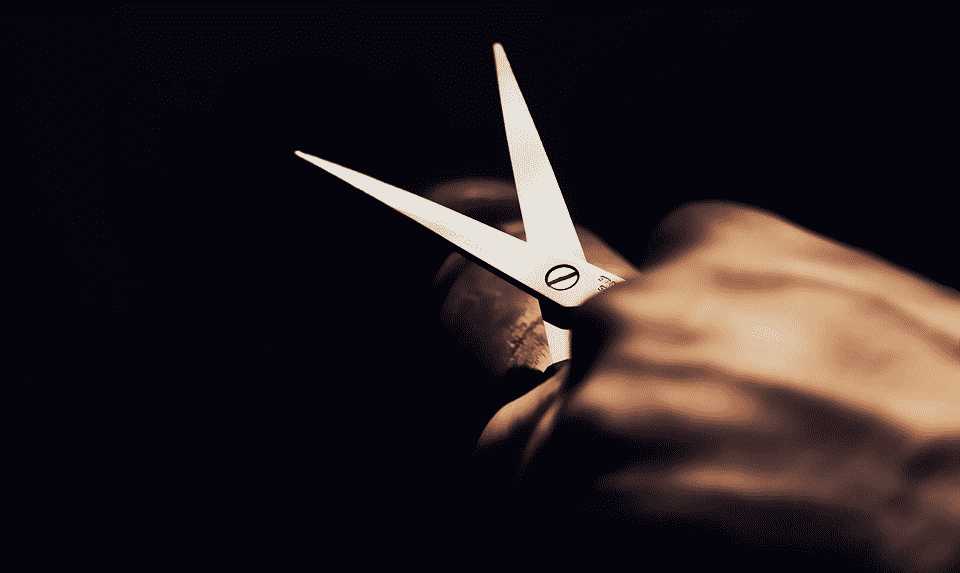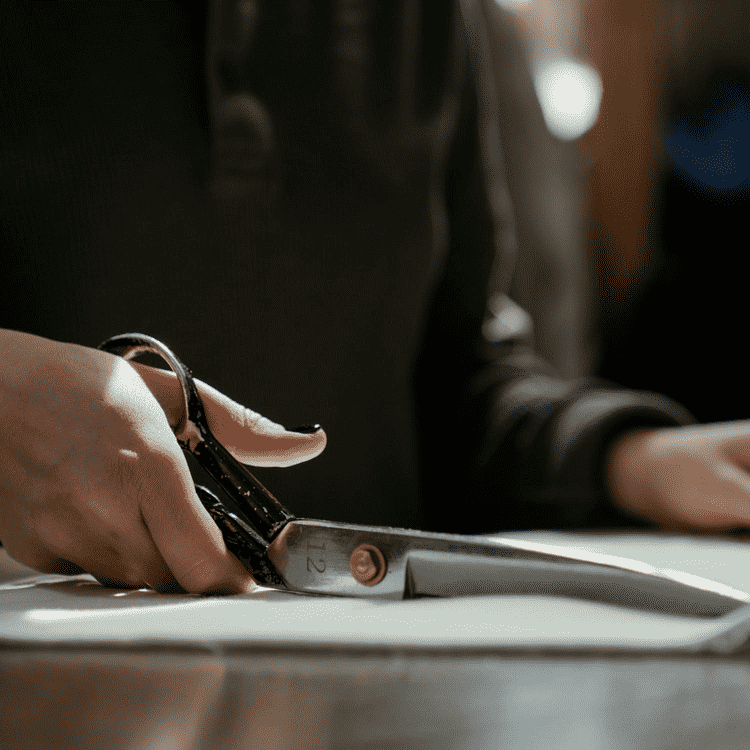Blog
How Scissors Are Made: The Manufacturing Process
How are scissors manufactured? Where are scissors manufactured? Why are scissors made of steel?
We’ll answer the common questions in the scissors manufacturing process. We’ll also dive into the raw materials used in manufacturing scissors and the different steps in the process.

Scissors Raw Materials
Many scissors manufacturers make scissors using steel for its main parts, which are the blade and the rivet. There are two kinds of steel commonly used in scissors:
Carbon Steel - A type of steel made from iron mixed with carbon depending on the manufacturer’s percentage. You will commonly see this on scissors with the same material from its blade to its handle. It is softer than stainless steel, meaning it is easier to sharpen to have a finer edge. However, this also means it could be deformed when dropped. Carbon steel is also more prone to rusting. Hence, scissors made from carbon steel must be treated with an anti-rust coating to prevent corrosion when stored in areas with high humidity (like the kitchen).
Stainless Steel - A steel manufactured from iron, carbon, and chromium. Adding chromium into the iron alloy makes it “stainless” and highly rust-proof as chromium is resistant to rust, stain, and corrosion. As it’s a tougher metal, scissors made from stainless steel are very durable and stay sharp longer. Overall, stainless steel is easier to maintain over time. A stainless steel scissors’ handles are commonly made of ABS (acrylonitrile-butadiene-styrene) plastic, which is light and durable.
Scissors Manufacturing Process
1. Creating the blades
The first step in manufacturing a pair of scissors is creating the blanks. “Blanks” are the two halves of a pair of scissors. They are formed using either of the three methods:
1. Cold Stamping - A sharp die-cutting mold shaped into the blanks is stamped on a sheet of unheated stainless steel. This process creates a blank by cutting the die into the steel.
2. Molding - The stainless steel is melted and poured into a mold shaped into the blank. When the steel cools down and hardens, the blanks are then removed from the mold.
3. Drop Forging - The blanks are shaped into a die that is referred to as a drop hammer. The drop hammer is pounded into a bar of red-hot stainless steel to forge the blank. This process puts pressure on the steel from the drop hammer’s pounding that strengthens the steel. Since it is a more tedious process, it results in a higher quality of scissors.
2. Casting the blanks
Next, the blanks are trimmed and shaped to get the desired form better by removing any excess metal. The trimmed blanks will then undergo a series of heating and cooling down.
The process may vary depending on the scissor manufacturer, but generally, the blanks are heated. After, they are cooled off quickly in cold air, oil, or water. In some manufacturers, other substances are also used.
The blanks will then go through “tempering.” This is the second heating of the hardened blanks to be cooled off again. The purpose of this step is to ensure the entire blank has consistent hardness. If the blanks don’t have a uniform hardness, it will wear out fast.
The repeated process of cooling down the blanks creates warping from heat. With that, it undergoes “peening” by placing the blanks in an anvil where they are straightened. It is lightly tapped with a hammer to remove the warping.
In this stage, a hole is also drilled in the blanks. This is where the two sides of the blanks will be attached to later.
3. Polishing the blanks
The blanks are pounded into blades. To do so, a quickly moving sanding belt or abrasive wheel is administered on one edge of the blank. The sanding belt or abrasive wheel’s surface is covered with an abrasive substance’s small particles to work as sandpaper. This makes the edge sharp.
The blade is cooled with water and cutting fluids to avoid warping and heating (which melts the steel).
4. Producing the handles
If the scissor is made using carbon steel, the handle is already part of the blank created in the previous steps. For stainless steel scissors, the handles will be made separately.
If its handle is made of metal, it will be manufactured by using the same process as the blanks, just in a different shape. Once it’s completed, the blade and handle blanks will be welded together.
Meanwhile, if the handle is made of plastic, it will go through a step called injection molding. This involves heating and melting thermoplastic, which is usually ABS. The thermoplastic is then injected under pressure into a mold in the shape of the handles. It needs to maintain the pressure as it cools and solidifies. After it hardens, one of the blank’s end will be inserted into the handle’s hollowed part using a strong adhesive.
5. Assembling the scissors
Once the blades and handles are completed, the next step is assembling. The two polished blades will be attached from the drilled holes with a rivet. Other scissors may use adjustable screws instead of rivets that allow it to be adjusted by the consumer.
If needed, the blades may be coated with nickel or chrome to prevent rusting. The screw and rivet are also lubricated.

6. Conducting quality control
The scissors need to be checked to ensure everything is working properly. One of the most important things to inspect is if the two blades align perfectly. A common defect called “wing” occurs when the blades overlap each other. Hence, the two blades must meet evenly with no gaps.
To guarantee the blade is sharp, quality control includes testing how it cuts through synthetic fabrics, not just on paper. It will be examined on:
● Sharpness - if it cuts through the fabric, not tear it.
● Strength - if it cuts through multiple layers of fabric
7. Packaging the scissors
Finally, the scissors will be packaged after passing quality control. Scissors are commonly packed using blister packaging, which is a combination of PVC and cardboard. Then, they are shipped to the stores for retailers, wholesalers, or distributors.
If you are looking for a wholesale scissors supplier or quality scissors manufacturer, get in touch with us. MaLang Scissors is a reliable scissors manufacturer in China, specializing in providing high-quality stainless steel scissors for home, office, kitchen, tailor scissors and more. We are scissors experts that utilize state-of-the-art equipment and a talented team of designers.
RELATED NEWS
- Tips on How To Choose Kitchen Scissors 2021-09-27
- How to Choose a Creditable Scissors Supplier to Support Your Business 2021-10-04
- 9.5 Inch durable kitchen scissors 2021-05-29
CATEGORIES
LATEST NEWS
CONTACT US
Contact:
Phone: 85257041968
E-mail: admin@gdhohoi.com
Whatsapp:85257041968
Add: Nawei Industrial Zone Najin No.5 Road West Huoda Qi Road Nan Wu Hao, Yangjiang City, GuangDong Province, China